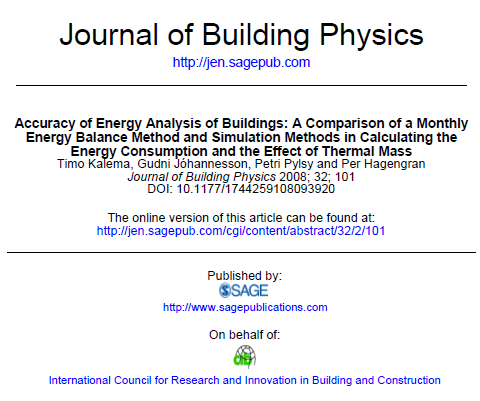
Accuracy of Energy Analysis of Buildings: A Comparison of a Monthly Energy Balance Method and Simulation Methods in Calculating the Energy Consumption and the Effect of Thermal Mass
The purpose of this article is to analyze the effects of thermal mass on heating and cooling energy in Nordic climate and for modern, well-insulated Nordic buildings. The effect of thermal mass is analyzed by calculations made by seven researchers and by seven different calculation programs. Six of these programs are simulation programs (Consolis Energy, IDA-ICE, SciaQPro, TASE, VIP, VTT House model) and one monthly energy balance method (maxit energy) based on the standard EN 832, which is the predecessor of ISO DIS 13790. It is purpose to evaluate the reliability of the monthly energy calculation method and especially its gain utilization factor compared with the simulation programs. In addition some sensitivity analysis concerning e.g., the effects of the size and the orientation of windows and the weather data on the energy consumption are made. The results show that the simplified standard methods of EN 832 and of ISO DIS 13790 generally give accurate results in calculating the annual heating energy, e.g., in the context of energy design and energy certification. However, the gain utilization factor of these standards is too low for very light buildings having no massive surfaces resulting in a too high energy consumption. The study shows, that the differences in input data cause often greater differences in calculation results than the differences between various calculation and simulation methods.
